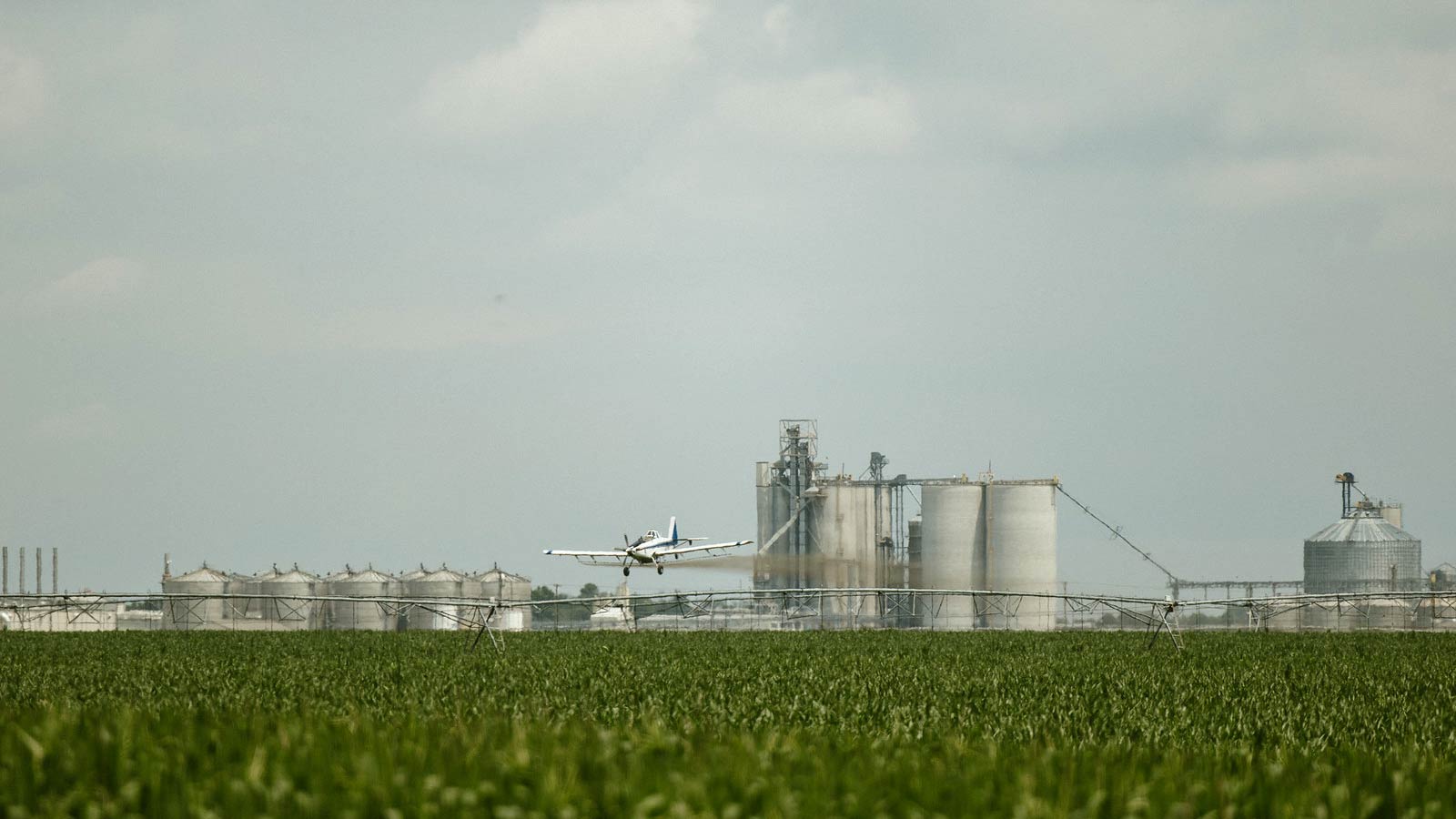Ethanol is quickly becoming the fuel of the future. It’s an eco-friendly choice that helps reduce air pollution and greenhouse gas emissions, while also supporting local farmers.
Ethanol is most commonly produced from corn, and growing corn for ethanol production is an important way Nebraska’s corn farmers can diversify their operations. A widely available green fuel source, ethanol comes in multiple blends such as E10, E15 and E85.
The advantages of ethanol fuel are clear, and the environmental benefits make it a perfect choice for those looking to reduce their carbon footprint. All in all, it’s a win-win situation that benefits the environment and our local communities.
With the increasing popularity of ethanol as an alternative fuel source, it is likely to become more widely used in the near future. It’s also important to know the truth when making a decision at the pump.
Here are 13 myths and facts about ethanol and its benefits as a fuel and for the environment.
MYTH 1: Ethanol Is Bad for Your Car
The myth that ethanol is bad for your car has been around for a while. However, this statement is false and based on outdated information. In fact, many studies have shown that ethanol-blended fuel can actually improve vehicle performance and increase engine longevity due to its high-octane rating.
MYTH 2: Corn Ethanol Is Bad for the Environment
The truth is that corn ethanol production reduces greenhouse gas emissions when compared to fossil fuels. It has been shown to reduce carbon dioxide, methane and nitrous. Its use also helps promote rural economic development, supports energy security and independence, and increases sustainability of agricultural resources.
Corn-based ethanol is renewable and sustainable, making it a viable alternative to traditional fossil fuels. It also improves air quality by reducing volatile organic compounds (VOCs) and particulate matter in the air.
MYTH 3: Ethanol Is Bad for Engines and Shortens Engine Life
The myth behind ethanol being bad for car engines and shortening the engine life of vehicles is unfounded. Ethanol blends can be beneficial to engines as they act as a cleaning agent and help keep a vehicle’s fuel injectors clean.
However, ethanol blends are not recommended for small engines such as those used in boats, lawnmowers and yard equipment. People should follow recommendations on the equipment’s user manuals to find the appropriate blends for those specific engines.
MYTH 4: Ethanol Is Worse Than Gasoline
Ethanol is proving to be a strong contender as an alternative fuel source when compared to traditional gasoline. Not only does it have the potential to reduce greenhouse gases and other emissions, but studies also show that ethanol can increase engine efficiency while producing fewer harmful pollutants. On top of that, ethanol has been proven to be more cost-effective than regular gasoline, making it a viable option for drivers who want to reduce their environmental impact without sacrificing performance.
One of the biggest advantages of ethanol is its reduction of greenhouse gas emissions. In fact, a report published in 2021 found that emissions from corn ethanol were 46% lower than regular gasoline. That’s an important factor in considering the overall impact of ethanol on the planet.
MYTH 5: Ethanol Greatly Reduces Gas Mileage
In reality, the use of ethanol as an alternative fuel has been shown to have minimal effects on overall fuel efficiency in vehicles.
While there may be some reductions in gas mileage when using certain blends of gasoline with higher percentages of ethanol, research suggests that these losses are offset by overall improved engine performance.
MYTH 6: Higher Ethanol Means Worse Gas Mileage
There is a myth that higher levels of ethanol fuel create significantly worse gas mileage, but it’s just a myth.
Most drivers will experience no noticeable change when using commonly available ethanol blends of E10 and E15.
Vehicles run just as well on E10 and E15—which contain up to 10% and 15% ethanol—as they do on regular gasoline.
MYTH 7: Ethanol Means Less Farmland for Food
Ethanol is only one of the many uses of corn. Even in Nebraska, which is one of the leading producers of ethanol in the United States, far more corn is used for food for humans and livestock than for ethanol.
Corn is one of the world’s most versatile crops and ethanol production is just one of its many uses. While this process has provided an important outlet for corn farmers to diversify their income, it also helps contribute to a greener environment. Ethanol production reduces emissions by replacing fossil fuels with renewable sources, therefore reducing air pollution and making a positive impact on the environment.
Additionally, it creates new business opportunities for rural communities, increasing their economic development and overall sustainability. Ethanol production from field corn is an important step toward a more sustainable future.
MYTH 8: Flex Fuel Isn’t Good
The myth that flex fuel isn’t good is a misconception. While some engines may have difficulty running on flex fuel if they are not designed to handle it properly, technology and engine designs are constantly improving to accommodate these changes in alternative fuels.
Studies have shown that flex fuel can be better for the environment with fewer emissions of carbon dioxide and other pollutants. Additionally, it has been reported that flex-fuel vehicles are more cost-effective to operate than gasoline-powered vehicles.
MYTH 9: Flex Fuel Will Damage Your Engine
The widespread myth that flex fuel, also known as E85 fuel, will damage engines in flexible-fuel vehicles (FFVs) is simply not true.
However, it is true that flex fuel, or E85, is not a fuel for gasoline-only engines and should only be used in vehicles with engines designed for these types of ethanol blends. Flex fuel can be used in flexible-fuel vehicles that run on E85, gasoline or any blend of ethanol-gasoline blend up to 83% ethanol.
For that reason, drivers should find out whether their vehicle operates on flex fuel before they fill up at the pump.
MYTH 10: E85 Is Bad for Your Car
E85, a blend of 85% ethanol and 15% gasoline, has been around for quite some time, but there are still lingering myths about its effects on vehicles.
One common misconception is that E85 is bad for your car; this simply isn’t true. In fact, E85 contains more octane than regular gasoline, which can result in improved engine performance and better fuel economy.
E85 is just as safe for your car’s components as regular gasoline, and it actually burns cleaner than regular gas, reducing emissions and helping the environment. So don’t be fooled by the myth—E85 is good for both your car and the planet.
MYTH 11: E15 Isn’t Safe for Your Car
E15 is a fuel blend of 15% ethanol and 85% gasoline, which is approved by the Environmental Protection Agency (EPA) for use in vehicles model year 2001 and newer.
Despite being an EPA-approved fuel blend, there remains a common misconception that E15 isn’t safe for your car. In reality, most cars 2001 and newer are built to handle E15 fuel without any issues.
Ultimately, E15 is a safe, approved fuel blend that can be used in most cars 2001 and newer without any major issues. It’s important to remember that all vehicles are different, so it’s essential to talk to an expert or consult your car’s owner manual before making the switch to E15. By understanding the facts, you can make an informed decision and be sure your car is running safely and efficiently.
MYTH 12: E15 Gets Much Worse Gas Mileage
Despite what some may believe, studies have shown that when used in the correct vehicles, E15 does not result in a major hit on a vehicle’s gas mileage.
In fact, studies conducted by the U.S. Department of Energy and Iowa State University found that using E15 in cars 2001 and newer showed no significant difference in miles per gallon compared to lower ethanol blends like E10 or regular gasoline.
MYTH 13: E10 Is Bad for Your Car
Just like ethanol in general is not harmful to your car, several independent studies have found that the commonly used blend of E10 has been found in also has no ill effects on vehicles.
In fact, research conducted by the Energy Department in 2011 stated that the use of E10—a blend of 10% ethanol and 90% gasoline—has no negative effect on engines or vehicles running on it and could even improve their performance.
E10 is approved for use in all conventional light-duty vehicles More than 98% of U.S. gasoline contains up to 10% ethanol to boost octane and reduce pollution.




